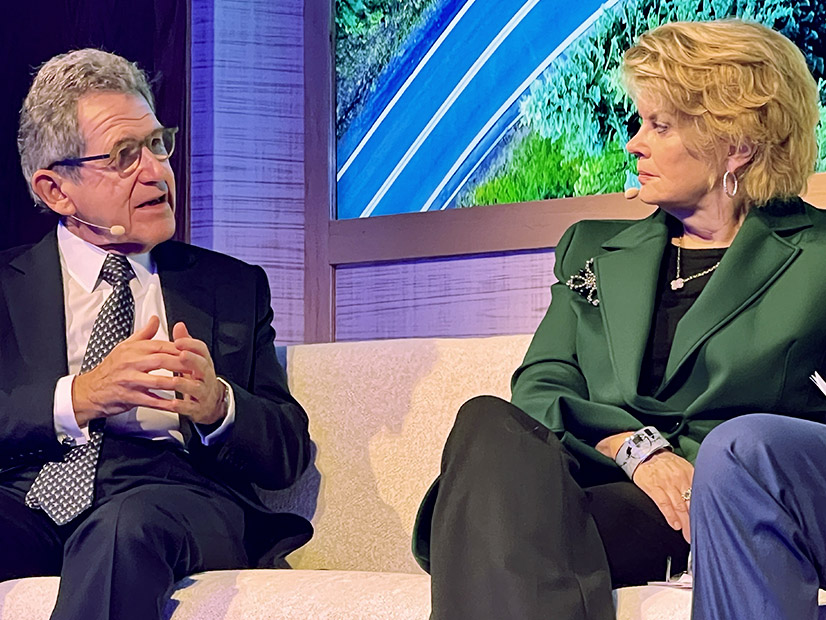The Bureau of Land Management is seeking public input on potential changes to several of its designated West-wide energy corridors, sites that are preferred locations for transmission and other energy transport projects on federal lands.
The changes now being considered include additions, deletions or revisions to about 673 miles of seven designated corridors, BLM said in an announcement Nov. 30. The changes would involve amendments to 19 resource management plans in seven states: Arizona, California, Colorado, Nevada, New Mexico, Utah and Wyoming.
The bureau said the changes are intended to “support transmission siting to speed clean energy production across the West.” Other goals of the project are improving reliability, relieving congestion and strengthening energy security.
“Transmission is a vital piece of moving our country to a clean energy economy,” BLM Director Tracy Stone-Manning said in a statement. “These updates will help plot a course for successful transmission deployment in order to bring renewable energy to markets across the West.”
The work will be funded with $1.2 million from the Inflation Reduction Act.
BLM has scheduled four in-person and two virtual public meetings in January to hear comments on the proposals.
The West-wide energy corridors are also known as Section 368 corridors, a reference to the section of the Energy Policy Act of 2005 that directed federal agencies to designate the corridors.
The idea behind the corridors is to facilitate transmission development while minimizing impacts to natural, cultural and historic resources across the West. In addition to electric transmission lines, the corridors may be preferred sites for oil, gas and hydrogen pipelines.
The corridors were first designated in 2009, covering about 6,000 miles across federal land in 11 Western states. But the Wilderness Society and other environmental organizations challenged the corridors’ approval in court. As part of a 2012 settlement agreement, BLM agreed to work with other agencies to reexamine the corridor designations.
The settlement agreement included “siting principles” for agencies to consider when evaluating corridors. One principle is to look at whether the corridors facilitate connections to renewable energy resources as much as possible while also considering other sources of energy generation.
Other principles were siting of corridors to provide “maximum utility and minimum impact to the environment,” promoting efficient use of the landscape and identifying appropriate uses for specific corridors.
As part of its corridor reexamination, BLM conducted a series of regional reviews to look at new information and hear from stakeholders. The regional reviews were compiled into a final report released in April 2022.
The final report includes recommendations for corridor additions, deletions and revisions. Several of the proposed additions would co-locate a corridor with existing transmission lines.
For example, a new corridor aligned with the planned Santa Fe transmission line in New Mexico could potentially facilitate the transmission of renewable energy from northeastern New Mexico to the Four Corners energy hub.
Another recommended corridor addition, along an existing 230-kV transmission line and the proposed Cross-Tie line, would provide a continuous east-west corridor through Nevada and Utah.
This would facilitate the transmission of high-capacity renewable resources from Wyoming and Utah to southern Nevada and California and give Utah and Wyoming customers access to excess solar energy from CAISO, according to the report.
But topography and the presence of the Utah Test and Training Range could make the changes challenging, the report acknowledged.
